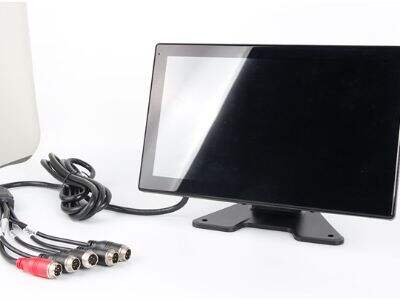As of course we know, radar liquid level sensors are important tools we use to measure liquid levels in tanks and vessels. These sensors operate by emitting radar waves, which reflect off the liquid surface and bounce back to the sensor. From the time it takes for the radar waves to return, the sensor can determine the liquid level. But have you ever heard of the dielectric constant?
Advantages
The dielectric constant of the liquid to be measured is of utmost importance when using radar for liquid level measurement. The dielectric constant is a measure of how well a material stores electrical energy relative to how the material can store energy in a vacuum. In layman’s terms, it describes how well an electric field goes through a material. Liquids have different dielectric constants, or measures of how much energy they can store in an electromagnetic field, and that can affect how radar waves move through them.
It must be emphasized how critical dielectric constant is to accurate measurement of liquid level sensor readings must be. The dielectric constant of a liquid determines how fast radar waves move through it, and how many of those radar waves end up being reflected back toward the sensor. The higher the dielectric constant, the slower radar waves will travel through the liquid, and the greater number will be reflected back toward the sensor. This can enable more precise liquid level readings.
Benefits
How the variation of dielectric constant affects the accuracy of the radar sensor is the key point. The change of the dielectric constant of the liquid to be measured can have an adverse effect on precision in the readings of the radar sensor. For instance, should the dielectric constant of the liquid change so as to decrease, the speed at which the radar waves pass through the liquid, the sensor is likely to under-estimate the level of the liquid. On the other hand, when dielectric constant is reduced, the radar waves move faster in the liquid and the sensor gives false signals that the liquid level exceeds the actual value.
Importance of DC calibration in reliable working of liquid level sensors cannot be over estimated. Calibrating for the dielectric constant of a measured liquid is required to obtain accurate and reliable liquid level measurements. After calibration with the known dielectric constant of the liquid the sensor will allow for correct readings to be taken.
Features
Ensuring the reliability of radar sensors by taking dielectric constant into account in liquid level measurement is very important. By taking into account the dielectric constant of the liquid you are sensing and calibrating it to your sensor, you can make the radar level sensor more reliable and accurate. Not only it will be useful for you to make better decisions when it comes to managing liquid inventory, but it will also avoid expensive mistakes, or disasters such as defective liquid reading.
Summary
To sum up, the dielectric constant is the main source for the security and accuracy of the radar liquid level sensor. By better understanding the impact of dielectric constant on radar wave propagation and calibration, you can optimize the performance of your radar sensor, and be smarter in how you manage your liquid inventory. So, when the next time you use a radar liquid level sensor, be sure to keep the dielectric constant in mind for accurate measurements. Trust in KYSAIL Liquid level sensors for the best!

 EN
EN
 AR
AR
 HR
HR
 CS
CS
 DA
DA
 NL
NL
 FI
FI
 FR
FR
 DE
DE
 EL
EL
 IT
IT
 JA
JA
 KO
KO
 NO
NO
 PL
PL
 PT
PT
 RO
RO
 RU
RU
 ES
ES
 SV
SV
 IW
IW
 ID
ID
 LV
LV
 LT
LT
 SR
SR
 SK
SK
 SL
SL
 UK
UK
 SQ
SQ
 ET
ET
 HU
HU
 TH
TH
 TR
TR
 FA
FA
 AF
AF
 MK
MK
 KA
KA
 UR
UR
 BN
BN
